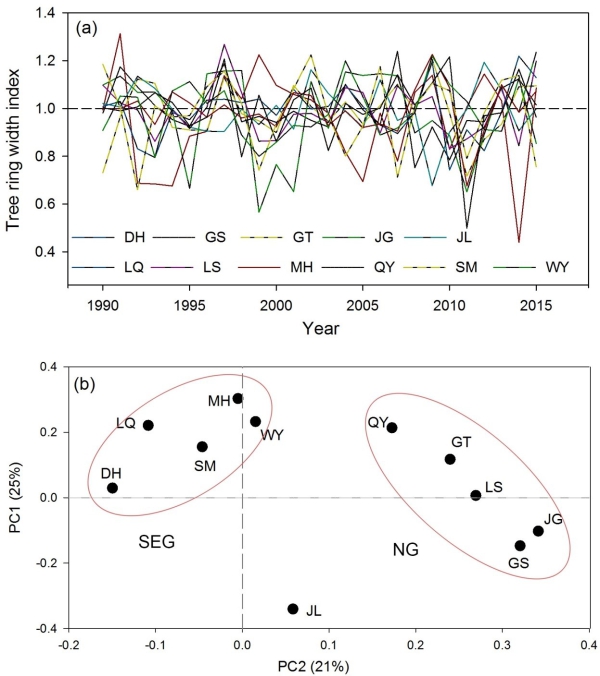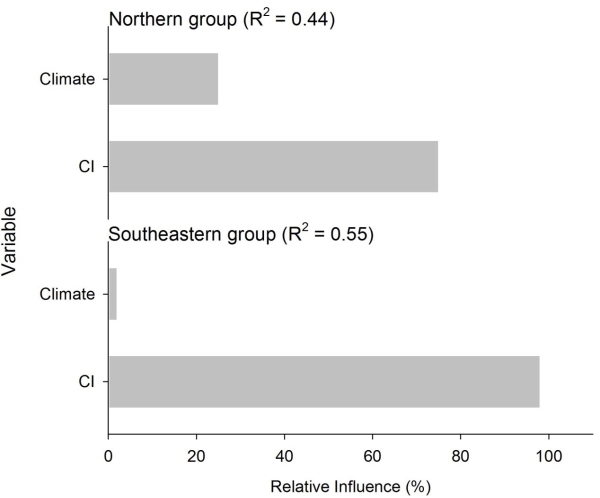Researchers Reveal Contributions of Competition and Climate on Radial Growth of Pinus Massoniana in Subtropics of China
The limiting factor of tree growth in subtropical regions of China has not been conclusive. Numerous studies have shown that climate is not the primarily limit factor of tree growth. Therefore, it is widely speculated that competition may play a vital role, but there is no relevant report at present, and there is no more quantifying the effect.
Under the guidance of Prof. HUANG Jianguo, the Postdoc LIANG Hanxue from South China Botanical Garden of Chinese Academy of Sciences, analyzed the radial growth of Pinus massoniana in the subtropical region of China from the Jigong Mountain in Henan Province to the Dinghu Mountain in Guangdong Province from 1990 to 2015.
Combining the effects of competitive pressure and climatic factors, the radial growth of P. massoniana was fitted. The results showed that the competition had the most significant effect on the growth of P. massoniana trees in the subtropical region of China. The growth pattern of P. massoniana and the relative effects of competition and climate were obvious different over the wide study region.
Based on the Nanling-Wuyishan Mountains, the model interpretation of the southeastern sub-region is 55%, and the relative contribution of competition is 98%. September precipitation is the most significant climatic factor (negative effect) affecting the growth of P. massoniana, which contributes only 2%. The model explains 44% of the total variance of pine trees in the northern sub-region. The relative contribution of competition is 75%, while the most significant climatic factor affecting the region is October sunshine duration (positive effect), with 25% relative contribution. The results prove that the competition in the subtropical region of China is the main factor limiting the radial growth of P. massoniana. As the latitude rises, the competition is gradually reduced and the climate effect is gradually increased. These finds are expected to provide a reference for forest management in the subtropics of China.
The relevant research has recently been published in the international academic journal Agricultural and Forest Meteorology (influence factor 4.039 in 2018, ranked first in forest). This is the first paper signed by the Central Botanical Gardens of the Chinese Academy of Sciences. The research was funded by the National Natural Science Foundation of China and the Natural Science Foundation of Guangdong Province. Link: https://doi.org/10.1016/j.agrformet.2019.04.014

Figure 1. (a) The 11 site-specific standard tree ring width chronologies; (b) The PCA loadings along PC1 and PC2 axes. NG and SEG indicate the northern group and southeastern group.

Figure 2. Relative contributions of the climate and competition on tree radial growth of northern group and southeastern group. CI indicates competition indices. For the northern group, climate means sunshine duration in October. While for the southeastern group, climate means precipitation in September.
File Download: